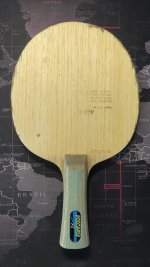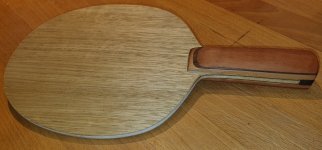This user has no status.
Member
What factors affect the location and size of sweet spot for all-wood blades?
Is it:
-Shape of the paddle head?
-Whether the handle is hollow?
-Quality of the wood plies?
-something else?
Essentially, I am asking:
1) Why is the "normal" location of the sweet spot just north of the center of the blade? (Is it because that's just how paddles behave, or because the players wanted it that way and the manufacturers were able to change the location?)
2) What do manufacturers do to keep the sweet spot consistent across different blades?
I read that carbon blades generally have bigger sweet spots, but I'm more interested in all-wood blades because the smaller sweet spot helps people learn to be more accurate with their strokes.
Is it:
-Shape of the paddle head?
-Whether the handle is hollow?
-Quality of the wood plies?
-something else?
Essentially, I am asking:
1) Why is the "normal" location of the sweet spot just north of the center of the blade? (Is it because that's just how paddles behave, or because the players wanted it that way and the manufacturers were able to change the location?)
2) What do manufacturers do to keep the sweet spot consistent across different blades?
I read that carbon blades generally have bigger sweet spots, but I'm more interested in all-wood blades because the smaller sweet spot helps people learn to be more accurate with their strokes.
Last edited:













